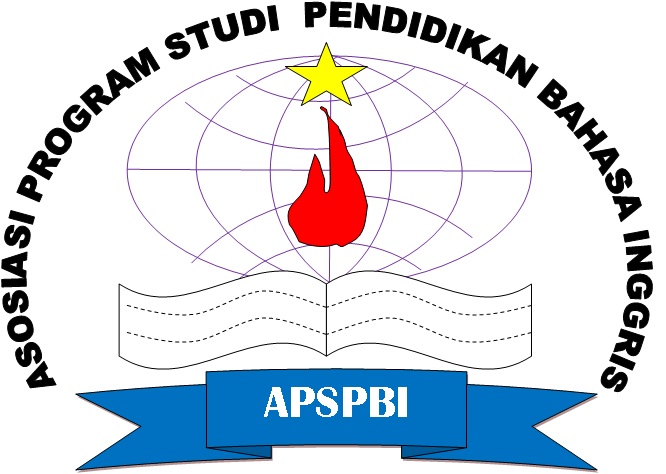Content and Language Integrated Learning (CLIL) Implementation for Indonesian EFL Learners: A Case Study
DOI:
https://doi.org/10.21460/saga.2023.42.165Keywords:
CLIL implementation; English teaching; EFL learners; challengesAbstract
This paper aims to investigate CLIL implementation for English teaching in Indonesia, particularly how this approach can be used in the EFL learning context considering that in most cases CLIL is implemented for bilingual education. To get the information and learn the phenomena in depth, a study case was conducted. The data was collected through classroom observation of two English teachers who have implemented CLIL in their teaching practice. It was then followed by a focus group discussion with those teachers to confirm the CLIL application and get more comprehensive data. This study found that CLIL was quite significant to be implemented for teaching English as it was not only able to improve students’ language skills but also broaden their insight globally. From this study, it was also highlighted that teachers must carefully select the materials and consider students’ level of proficiency to make a meaningful and effective learning process.
References
Arham, M., & Akrab, A. H. (2018). Delving into content lecturers’ teaching capability in Content Language Integrated Learning (CLIL) at an Indonesian university. The Asian ESP Journal, 14(7.2), 68–89.
Beardsmore, H. B. (1993). European models of bilingual education: Practice, theory, and development. Journal of Multilingual and Multicultural Development, 14(1–2), 103–120. https://doi.org/10.1080/01434632.1993.9994523
Bower, B. K., Coyle, D., Cross, R., & Chambers, G. N. (2022). Book review curriculum integrated language teaching: CLIL in practice. Language Education and Acquisition Research Network Journal, 15, 977–892.
Coyle, D. (2002). Relevance of CLIL to the European Commission language learning objectives. In CLIL/EMILE European Dimension: Actions, trends and foresight potential European Commission, public services contract DG 3406/001-001.
Coyle, D. (2006) CLIL in Catalonia, from Theory to Practice. APAC Monographs, 6. Gerona: APAC.
Coyle, D. (2007). Content and language integrated learning: Towards a connected research agenda for CLIL pedagogies. International Journal of Bilingual Education and Bilingualism, 10(5), 543–562. https://doi.org/10.2167/beb459.0
Coyle, D., Hood, P., & Marsh, D. (2010). CLIL content and language integrated learning. (Ed.). Cambridge University Press. https://doi.org/10.1017/ 9781009024549
Delgado-Gutierrez, L. (2020). Centro de Estudios de Postgrado discovering flavours: A didactic proposal to favour the development of oral expression in early childhood education through CLIL and Project-Based Learning [University of Cordoba]. https://tauja.ujaen.es/bitstream/10953.1/13113/1/TFM%20Laura%20Delgado%20Gutierrez.pdf
Donoghue, Mildred. R. (2009). Language arts: Integrating skills for classroom teaching. London: SAGE Publications Ltd.
Grenfell, M. (Eds.). (2002). Modern languages across the curriculum. Routledge.
Hamied, F.A. (2017). Research methods: A guide for first time researchers. Bandung: UPI Press.
Harmer, J. (1991). The practice of English language teaching (4th Ed). London: Longman.
Izzah, I., Rafli, Z., & Ridwan, S. (2018). The model of Bahasa Indonesia teaching materials taken from stories in the Quran taught with content and language-integrated learning approach. Language Circle: Journal of Language and Literature, 12(2), 123–142. https://doi.org/10.15294/lc.v12i2.14172
Kettler, T., Lamb, K. N., & Mullet, D. R. (2021). Developing creative abilities in language arts. Developing creativity in the classroom, July, 151–167. https://doi.org/10.4324/9781003234104-12
Khoiriyah & Soeparto, S. (2022). Language learning strategies in online CLIL- oriented classrooms: Voices from Indonesian higher education students. Eralingua: Jurnal Pendidikan Bahasa Asing dan Sastra, 6(2), 479–496.
Krahnke, K. (1987). Approaches to syllabus design for foreign language teaching. Prentice-Hall.
Lastra-Mercado, D. (2016). An introductory study of Project-Based Learning (PBL) and Content and Language Integrated Learning (CLIL) in TEFL [Theses]. Universidad de Jaén. https://tauja.ujaen.es/handle/10953.1/4882
Marsh, D., Maljiers, A., & Hartiala, A.-K. (2001). Dimensions of content and language integrated learning. In Profiling European CLIL classrooms.
Marsh, David. (2002) Content and language integrated learning: The European dimension. Jyvaskyla, Finland: University of Jyvaskyla Press.
Nikula, T., & Marsh, D. (1998). Terminological considerations regarding content and language integrated learning. Paper, 1, 12. https://eric.ed.gov/?id=ED417056
Pladevall-Ballester, E. (2019). A longitudinal study of primary school EFL learning motivation in CLIL and non-CLIL settings. Language Teaching Research, 23(6), 765–786. https://doi.org/10.1177/1362168818765877
Porto, M. (2021). Intercultural citizenship in foreign language education: An opportunity to broaden CLIL’s theoretical outlook and pedagogy. International Journal of Bilingual Education and Bilingualism, 24(7), 927–947. https://doi.org/10.1080/13670050.2018.1526886
Sanchez-Garcia, R., & Pavon-Vazquez, V. (2021). Students’ perceptions on the use of Project-Based Learning in CLIL: Learning outputs and psycho-affective considerations. Latin American Journal of Content & Language Integrated Learning, 14(1), 69–98. https://doi.org/10.5294/laclil.2021.14.1.3
Sanz Navarro, N. (2020). Centro de Estudios de Postgrado Advantages of Using CLIL and Project Based Learning in bilingual pre-primary schools: A Didactic Proposal. University of Cordoba. https://tauja.ujaen.es/handle/10953.1/13125
Sarip, M. (2019). Improving Arabic speaking learning through content and language integrated learning approach in PSPBA FBS UNJ. Jurnal International Seminar on Languages, Literature, Arts and Education (ISLLAE), 1(1), 131–137.
Simbolon, N. E. (2020). CLIL practice in a maritime English course: EFL students’ perception. EduLite: Journal of English Education, Literature and Culture, 5(2), 263–276. https://doi.org/10.30659/e.5.2.263-276
Sumartana, M., Sadiyani, W., Widanta, R. J., Ardika, D., Sitawati, R., & Suciani, K. (2019). Effectiveness of Content-Language Integrated Learning (CLIL) toward students’ English competence. Advances in Social Science, Education and Humanities Research, 354(iCASTSS), 383–386. https://doi.org/10.2991/icastss-19.2019.81
Vasquez, K. C. (2019). Contextualized activities to promote cultural awareness: under the umbrella of CLIL and PBL in English as a foreign language. Redine (Ed.), EDUNOVATIC, 43(1–2), 485–490. https://doi.org/10.1163/156854293X00151
Wijirahayu, S. (201). Religious value, Content Language Integrated Learning and a model of students’ character building in nutrition study program. Proceedings of the 1st International Conference on Social Determinants of Health - ICSDH, ISBN 978-989-758-362-9, SciTePress, 28-32. https://doi.org/10.5220/0008371500280032
















